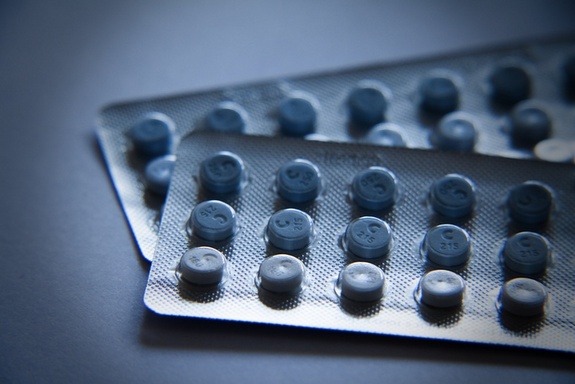Many Teens Rely on the Pill for Non-Sexual Reasons

Many women are popping the pill for more than its pregnancy-prevention benefit, according to a study by the Guttmacher Institute. The study finds 33 percent of U.S. teens and 14 percent of all U.S. women taking the oral contraceptive are doing so solely to treat menstrual cramps or for another purpose not related to birth control.
Overall, more than half of U.S. women use the pill at least in part for non-contraceptive purposes.
"It is well established that oral contraceptives are essential health care, because they prevent unintended pregnancies," Guttmacher study researcher Rachel K. Jones said in a statement. "This study shows that there are other important health reasons why oral contraceptives should be readily available to the millions of women who rely on them each year."
Pill survey
The researchers examined data from the National Survey of Family Growth, a poll administered by the National Center for Health Statistics. In-person interviews of 7,356 women ages 15 to 44 were conducted between June 2006 and December 2008, with results being weighted to ensure the findings were nationally representative.
Nationwide, about 11.2 million women ages 15 to 44, or 18 percent of all U.S. women, currently use oral contraceptive pills. Of these women, 86 percent report taking the pill for birth control. The other most commonly cited reasons for taking the pill are: reducing cramps or menstrual pain (31 percent); menstrual regulation (28 percent); treatment of acne (14 percent); and treatment of endometriosis (4 percent). Endometriosis is an often painful disorder in which tissue that normally lines the inside of the uterus grows elsewhere in the body, typically within the pelvic region, according to the Mayo Clinic.
Furthermore, 762,000 women who have never had sex use the pill, primarily for non-contraceptive purposes. Fifty-seven percent said they use it to treat menstrual pain, 43 percent for menstrual regulation, and 26 percent for acne treatment. [The Pill Turns 50]
Sign up for the Live Science daily newsletter now
Get the world’s most fascinating discoveries delivered straight to your inbox.
The teen years
Pill users ages 15 to 19 stood out in the survey for their various non-contraceptive-related motivations. That makes sense, as menstrual-related disorders and irregular periods are common during the teen years, Guttmacher researchers noted; seventy percent to 91 percent of female teenagers report painful periods, and 25 percent indicate menstrual irregularity.
Of all women surveyed who used the pill, teens were the most likely (82 percent) to use birth control pills partly or solely for non-contraceptive reasons. Among teens who said they've never had sex, 8 percent use the pill, in most cases for easing menstrual pain.
The survey did not ask about using the pill to treat less common medical problems such as hirsutism (unwanted, male-pattern hair growth in women), menstrual migraines and fibroids, so researchers noted their numbers may underestimate the number of women who use the pill for reasons besides pregnancy prevention.
Follow LiveScience for the latest in science news and discoveries on Twitter @livescience and on Facebook.
Jeanna Bryner is managing editor of Scientific American. Previously she was editor in chief of Live Science and, prior to that, an editor at Scholastic's Science World magazine. Bryner has an English degree from Salisbury University, a master's degree in biogeochemistry and environmental sciences from the University of Maryland and a graduate science journalism degree from New York University. She has worked as a biologist in Florida, where she monitored wetlands and did field surveys for endangered species, including the gorgeous Florida Scrub Jay. She also received an ocean sciences journalism fellowship from the Woods Hole Oceanographic Institution. She is a firm believer that science is for everyone and that just about everything can be viewed through the lens of science.









